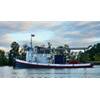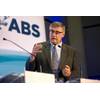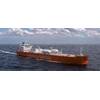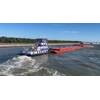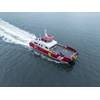CIMAC Calls for Cross-sector Cooperation to Reduce Pollution
The IMO decision of April 2018, calling the international shipping industry to decarbonize and at least halve its greenhouse gas emissions by 2050 was an important milestone and was largely welcomed by the global engine builders’ community. Although some parties found that the IMO target could have been even more ambitious, it clearly marked a paradigm shift: improvements in existing technologies will not be enough. Only through cross-sector cooperation and an increased focus on R&D in carbon-neutral technologies (such as batteries, fuel cells, or synthetic fuels) will shipping stand a chance of reaching the IMO 2050 target.
2050 – The day after tomorrow
2050 may sound distant, but for the shipping community it is not. Between now and 2023, the IMO will work out the legislative steps that will pave the way for the shipping industry to achieve its goal and enable the industry to invest in new, low-carbon or zero-carbon power and propulsion systems. If these challenges are met, we will most probably be able to reduce greenhouse gas emissions by more than 50% by 2050. If new technologies can be developed and brought onto the market in time, there is a good chance that market mechanisms will enable the fulfillment of the IMO targets. In any case, failure is not an option: not only for the sake of shipping’s reputation but, looking at the big picture, for the good of future generations.
No ‘Silver Bullet’ in immediate sight
Whatever the future may hold, there is no immediate “silver bullet” to meet the challenge of the IMO targets. There are some promising technical solutions, such as battery driven ships or fuel cells, but as of today, these are unable to cover the propulsion of – for instance – sea-going container vessels. We always need to keep the end-user in mind. Some technologies may have the development potential to become viable solutions for short-sea shipping, whilst others may need to be engineered to cover the demands of deep-sea.
Moreover, current changes such as the switch to LNG are necessary and helpful, but should only be considered as bridging technologies, if they are still fossil-fuel based. Hydrogen and carbon-neutral (bio or synthetic) fuels could be considered a solution but are currently far from being competitive. Other ideas may include innovative ship design (more efficient hulls, system integration and optimization) as well as broader digitalization (including optimization of port calls and the supply chain at large). These all call for an even wider scope of parties to be involved.
Consequently, there is a need for a consensus on finely focused R&D activities, with well-defined aims that avoid dilution of effort by pursuing several directions at once and so wasting valuable resources. Support from regulatory bodies is key here and this means research funding; but first and foremost a clear and stable global legal framework is needed, which does not predetermine any specific technical direction. Only a rule-making that is seen to be technologically-neutral has a chance of attracting the necessary investments worldwide.
Some low-hanging fruit is there for the taking
To support the development of technical solutions in the medium and long-term, an efficient cross sector R&D framework must be defined and supported without delay. Moreover, there is also a need for other short-term measures. These need to focus on efficiency improvements and take account of existing and close to market-ready technical solutions, such as LNG retrofits or system optimization.
There may be some unintended consequences to seemingly quick fixes such as a direct call to speed reductions; they do not incentivize technical progress and the switch to new technologies. Such short-term measures must be part of a larger toolbox. They must be specifically focused on the least efficient ships, and part of a range of solutions that shipowners may choose from. Moreover, some thought should be given to the fact that power limitation may be a much more efficient way to address this issue. Indeed, de-rating the engine offers the possibility of lowering the vessel’s maximum speed and thereby optimizing the actual load point with the design load point. Such a measure, based on a power limitation on the vessel, would inherently provide a speed advantage for the best performer / best design.
The necessary developments require co-operation between all stakeholders, namely ship owners, shipbuilders, engine manufacturers, equipment manufacturers, system integrators and the Classification Societies. In advance of the upcoming MEPC74 meeting of the IMO in May 2019, CIMAC would like to underline that the organization welcomes such partnerships and calls on IMO to continue to promote and support cross-sector initiatives and R&D in shipping. The global engine builder community will discuss all these questions at the 29th CIMAC World Congress. The event takes place from June 10 – 14 2019 in Vancouver, Canada, and all stakeholders are most welcome to participate.


